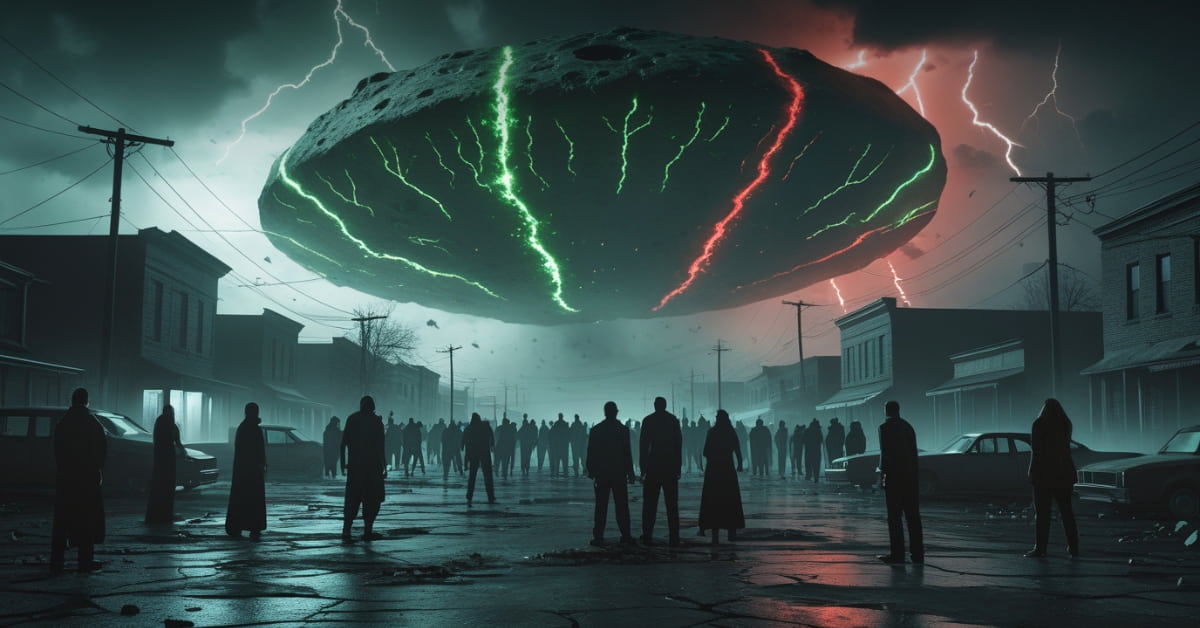Five Strangest Discoveries of 2025 That Shocked Science

Every once in a while, nature throws us a curveball so bizarre, it forces scientists to stop and ask, What else is out there that we’ve missed?
Well, 2025 delivered not one, but five such moments—now known as the Five Strangest Discoveries of 2025.
From eerie deep-sea predators cloaked in silence to microscopic life that redefines what “alive” even means, this year has been a relentless parade of strange happenings. Each discovery whispers the same unsettling truth:
Much of Earth’s secret biology remains undiscovered.
Let’s take a journey through the Five Strangest Discoveries of 2025—each one more eye-opening, mind-warping, and logic-defying than the last.
Table of Contents
Five Strangest Discoveries of 2025
1. Skeleton-Panda Sea Squirt

Clavelina ossipandae – Okinawa, Japan
Imagine diving through warm reef waters off the coast of Okinawa. Everything is serene. Then you spot something glowing—a translucent blob that looks like a panda skull. You blink, but it’s still there.
Meet Clavelina ossipandae, the so-called “Skeleton-Panda Sea Squirt.”
🧠 What Makes It So Strange?
- It resembles a cartoon skeleton with panda eyes.
- It is completely harmless yet.
- Early observers assumed it was a joke due to its defiant looks.
This filter-feeding tunicate doesn’t move much. It anchors to coral and filters plankton, but its looks have launched it into viral stardom.
🔍 The Science:
- Colony structure: Lives in clusters with shared protective tunics.
- Defense: Uses mimicry for camouflage.
- Lifecycle: Grows from larva and reproduces by budding.
🤯 Shocking But True:
- It’s not a vertebrate. No bones at all.
- The Clavelina genus has a new species.
- It may be one of the clearest examples of visual mimicry in tunicates.
Reflection: When biology gets this weird, it challenges what we think life should look like.
2. Dulcibella camanchaca

“”Darkness”—Atacama Trench, Chile
At almost 8,000 meters below the ocean surface, under crushing pressure, scientists encountered a translucent predator that chills the spine.
Nicknamed “Darkness,” this ghostly deep-sea fish is officially known as Dulcibella camanchaca.
🧠 What Makes It So Strange?
- Nearly invisible in its abyssal habitat.
- Infrared-glowing eyes—unheard of in creatures this deep.
- First predator ever documented at this trench depth.
It doesn’t chase prey. It waits. Observes. Then strikes with needle-thin limbs and jagged jaws.
🔍 The Science:
- Behavior: Solitary and territorial.
- Diet: Crustaceans, worms, deep-sea isopods.
- Defense: Perfect camouflage—even sonar struggled to detect it.
🤯 Shocking But True:
- Lives under pressure 800x greater than sea level.
- Named after Chile’s mysterious coastal fog.
- Could represent a whole new category of deep-sea predator.
Reflection: The deep sea isn’t empty. It’s alive with secrets shaped by silence, pressure, and patience.
3. Acrophylla alta

Australia’s Monster Stick Insect—Daintree Rainforest
Stick insects are supposed to be small, right? Quiet, forgettable. Not this one.
Introducing Acrophylla alta—the largest and heaviest stick insect ever found, native to Queensland’s vibrant Daintree Rainforest.
🧠 What Makes It So Strange?
- Up to 40 cm long, 44 grams heavy.
- Heavier than some frogs—and just as thick.
- Evaded discovery for decades due to flawless camouflage.
🔍 The Science:
- Behavior: Slow-moving, branch-mimicking master of disguise.
- Lifecycle: Lays hundreds of eggs; lives up to 18 months.
- Defense: Sharp legs can scratch; limbs can detach to escape.
🤯 Shocking But True:
- Wings resemble fungus-covered leaves.
- So heavy that it barely ever flies.
Reflection: Some giants hide not through power, but through stillness. And sometimes, we miss them for decades.
4. Candidatus Sukunaarchaeum mirabile

The Simplest Parasite Ever Found—Yellowstone Hot Springs, USA
In Yellowstone’s scalding microbial mats, researchers found something so minimal, it’s barely alive by classic definitions.
Candidatus Sukunaarchaeum mirabile is a microscopic parasite that redefines what life can be.
🧠 What Makes It So Strange?
- No independent metabolism.
- Totally dependent on a host.
- Smallest genome ever found in an archaeon.
🔍 The Science:
- Host: Lives inside an Ignicoccus archaeon.
- Behavior: Extracts nutrients without harming its host.
- Reproduction: Possibly binary fission; unclear.
🤯 Shocking But True:
- Blurs the line between microbe and virus.
- Might represent a missing link in evolution.
- Found in one of Earth’s harshest habitats.
Reflection: When we discover life that lives on life just to exist, we must ask: what is life, really?
5. Duonychus tsogtbaatari

The Two-Fingered Dinosaur with Monster Claws—Gobi Desert, Mongolia
In Mongolia’s Gobi Desert, a dinosaur with bird-like and eerie traits was uncovered.
Duonychus tsogtbaatari stood 4.5 meters tall, feathered and strange, with just two enormous claws per arm.
🧠 What Makes It So Strange?
- Most theropods had three claws; this one had two gigantic ones.
- Herbivore with clawed arms more fitting of a predator.
- May have used claws to rip bark, dig roots, or fend off attacks.
🔍 The Science:
- Behavior: Likely dug into tough vegetation or defended itself.
- Social Life: Fossil clusters suggest group nesting.
- Growth: Matured within five years.
🤯 Shocking But True:
- Claws measured nearly 50 cm long.
- Feathered—offering another bird-dino connection.
Reflection: Evolution is messy. And sometimes, it leaves behind monsters with feathers.
🌍 Why These Strange Happenings Matter
They might sound like science fiction, but each of these discoveries expands how we think about biology, survival, and even ourselves.
They reveal:
- New evolutionary strategies
- Unseen ecological relationships
- Potential breakthroughs in medicine, materials, and biotechnology
But above all, they prove we’re still students of our own planet.
🧠 Final Words
What if these aren’t just isolated oddities but clues to a larger evolutionary puzzle we haven’t solved yet?
What if there are hundreds more waiting in the shadows—in forests, in oceans, under microscopes?
The Five Strangest Discoveries of 2025 aren’t just weird headlines—they’re potential keys to understanding the unknown patterns that govern life itself.
One thing is certain:
When nature breaks its own rules, we get the true meaning of strange happenings.
Author: Mubashir Razzaq
Founder of Strange Happenings, paranormal explorer, and researcher of hidden histories and mysterious phenomena. Mubashir dives deep into forgotten places, unexplained legends, and strange happenings across the world—bringing readers stories where history and mystery collide.




